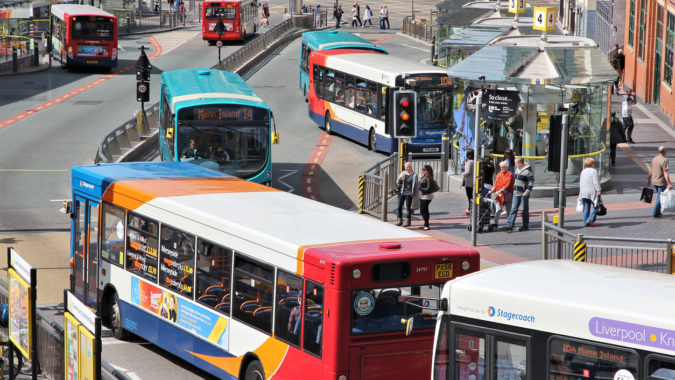Christmas may be a traditional time for warm words. But this blog is about moving beyond warm words to a deeper understanding of how economic infrastructure can best serve the needs of all members of society.
Let me offer just one example. As we approach the shortest day of the year, there will be people who feel particularly anxious about accessing key infrastructure because of fears about safety – not helped by the especially cold weather right now – but also because of inadequate lighting, or unhelpful design or siting of stations and stops.
As Sowmya Parthasarathy of Arup London has powerfully pointed out, “many women make compromises to their lifestyle as the days get shorter due to fear of going out after dark…Shorter days impact women’s lives more than we realise and highlights how poorly our cities cater to their needs.”
The Commission’s Rail Needs Assessment (2020) found that men take around 57% of the total number of rail trips annually, despite making up less than 50% of the population. While of course various factors will be at play, might it just be that some of the decisions we make about public transport design and maintenance could better promote equal access?
Asking the right questions
This is just one example of many. While the Commission’s role is not to make recommendations about the design of specific schemes, it is our responsibility to advise government on the right policy, funding and regulatory environment to ensure the UK is ready to face the future – and that means creating infrastructure that serves everyone.
In some areas – like broadband provision, that duty can be discharged by working towards a form of universal provision, or minimum standards, that apply everywhere. In practice this may mean working out how far the market will reach of its own accord, and then what government may need to do to fill in the gaps. We followed this approach when we looked at gigabit broadband reach in the first National Infrastructure Assessment (2018).
But in other areas – particularly transport – the task of ensuring equitable access for all groups is more complex, and requires more detailed analysis and thinking.
As we work towards the second National Infrastructure Assessment (NIA2), we are keen to raise our ambition in terms of the way we approach equality, diversity and inclusion, building on the work we have undertaken since we launched our Diversity & Inclusion Strategy in 2020. This work will continue beyond the publication of NIA2 next autumn.
To help inform our approach, we convened a roundtable in October to ask people with experience in embedding diversity and inclusion into policy making for their advice and insights. Our discussion focused on how policymakers can work with end user groups to improve the experiences of people with protected characteristics when using infrastructure; the barriers that exist to progress, and how we measure the impact of new approaches.
That session was a rich and valuable discussion. It reinforced the importance of avoiding a ‘tick box’ approach to our work in this area; of obtaining accurate data and other evidence sources to inform our policy work; and of close working with user groups with lived experience of exclusion or barriers to accessing infrastructure.
What is the Commission doing?
The Commission is committed – within its resources and remit – to doing all of that. Some things can be achieved as part of our work for NIA2; some will be a longer term endeavour.
Over the next year, we undertake to:
- Publish more detailed analysis of the potential impact of our recommendations for household finances: NIA2 will be accompanied by an assessment of the distribution of projected infrastructure costs which arise from our recommendations. We will also look at impacts for different groups by assessing households where at least one member has a protected characteristic, or where different proportions of the people within a household have the characteristic. This will provide visibility on the potential impact of our recommendations and indicate whether other policy interventions (which may fall outside the Commission’s remit) may be necessary to address these.
- Assess impacts on different population groups: Each of our sector project streams will give material consideration to the potential impact of our policy proposals to different groups. For example, our transport work will take account of how the balance between public transport and private vehicles might affect disability access.
- Measuring pollution impacts: The Commission will also consider the degree to which its recommendations will reduce environmental pollution and the groups particularly susceptible to harm from this pollution.
This analytical and policy making approach will be underpinned with ongoing dialogue with representative user groups and engagement with sector-based experts on measuring and mitigating impacts on different groups.
We will also be supported – and challenged – in this work by the valuable input of the Commission’s Design Group and Young Professionals Panel, who are able to offer a breadth of perspective to our work at various stages.
NIA2 will not be the end of the story. But I believe we are putting in place both the internal mechanisms, and the external transparency, that will together inform a more evidence-based, engaged approach to promoting equality of access to key infrastructure services.
It will be a step forward on a crucial journey that seeks to unpick and address decades (if not centuries) of embedded inequalities in how some aspects of our infrastructure are designed and delivered.
It is certainly not a task we can undertake alone. I look forward to continued engagement with a range of partners – including, crucially, the private sector – as we forge on with this mission.
Julia Prescot is Lead Commissioner for Equality, Diversity and Inclusion.



